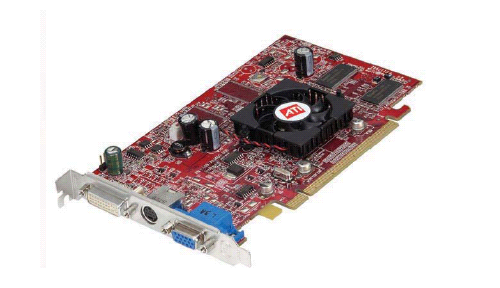Nemesis11
Power Member
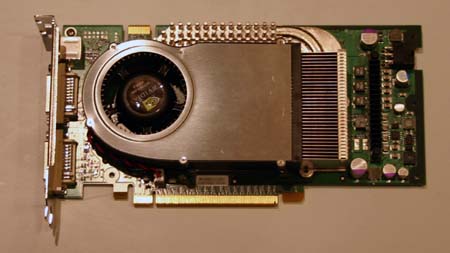
The surprise of the show was a brief encounter with NVIDIA's upcoming NV45, NVIDIA's PCI Express successor to the strong performing NV40 (GeForce 6800 Ultra).
At first glance, the NV45 card looks like a normal 2-slot NVIDIA graphics card
Upon closer look you'll notice that this particular card has a PCI Express x16 interface, but with no bridge chip. It looks like the rumors of a bridgeless NV45 were true.
Here's what we do know about NV45, it's currently running at a 450MHz core clock with 1.1GHz GDDR3 memory; this particular card uses Samsung chips. The 450MHz clock speed is a 12.5% increase in core clock speed over the GeForce 6800 Ultra, with memory speed remaining unchanged.

ATI had PCI Express boards spread out all over the show floor, with the PCI Express Radeon X600 XT showing up at Gigabyte's booth:
The X600 XT is basically a PCI Express version of the Radeon 9600XT with a higher memory clock (740MHz vs. 600MHz). We will have more details on the X600 in an upcoming article.
ASUS also had a X600 XT solution at their booth
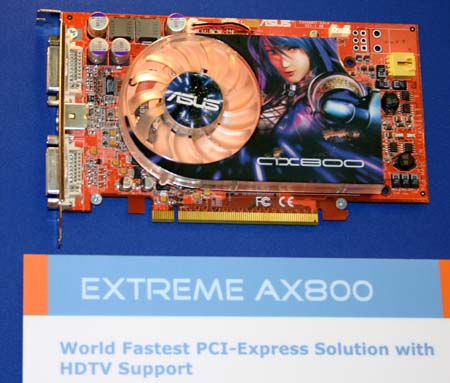
As well as a dual-DVI PCI Express X800 card
Remember that the PCI Express X800 is based off of a slightly different chip than the AGP X800, known internally as the R423 (R420 is the AGP version).
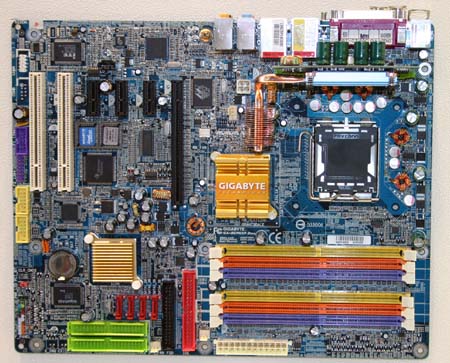
The majority of the problems seem to reside with the 925X and its support for DDR2 memory, which has been through numerous revisions.We believe that the 925X being shown off at Computex is the fourth incarnation of the chip, which is pretty bad for Intel, especially considering that even in its current revision the chipset does not support ECC - a planned feature for the chipset.
The other complaints we've been hearing about from motherboard manufacturers involves Intel's LGA-775 socket. Since the pins have been moved off of the CPU and onto the socket itself with the LGA-775 interface, motherboard manufacturers have been reporting extremely high failure rates with those sockets. The pins on the socket itself are spring-loaded, and installing a CPU obviously causes the springs to compress. What seems to be happening however is that after a handful of CPU installations, the springs don't want to spring back to their original position - resulting in premature socket failures. The problem does seem to be a solvable one, but we'll have to wait and see what the motherboards we get our hands on are like. You better believe that we'll be testing socket reliability as soon as we get LGA-775 boards and CPUs in house.
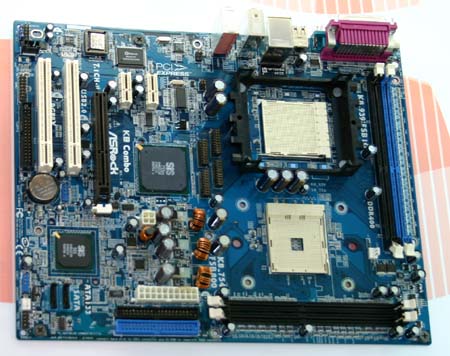
ASRock is displaying an interesting board that caught our eyes; the K8 Combo board features both a Socket-939 and a Socket-754 socket. Astute AnandTech readers will know that Socket-754 Athlon 64s only have one Hyper Transport link and thus cannot support multiple processors, so something must be up. Indeed the K8 Combo isn't a multiprocessor board, rather its a motherboard that can support either a Socket-939 CPU or a Socket-754 CPU, but not both. The flexibility offered by the board is interesting, as it provides a decent upgrade path for current Socket-754 users, granted it may be a bit extreme.
Muito mais aqui (http://www.anandtech.com/printarticle.html?i=2064). QBM, BTX, etc etc.
Have big fun.....
Última edição:








